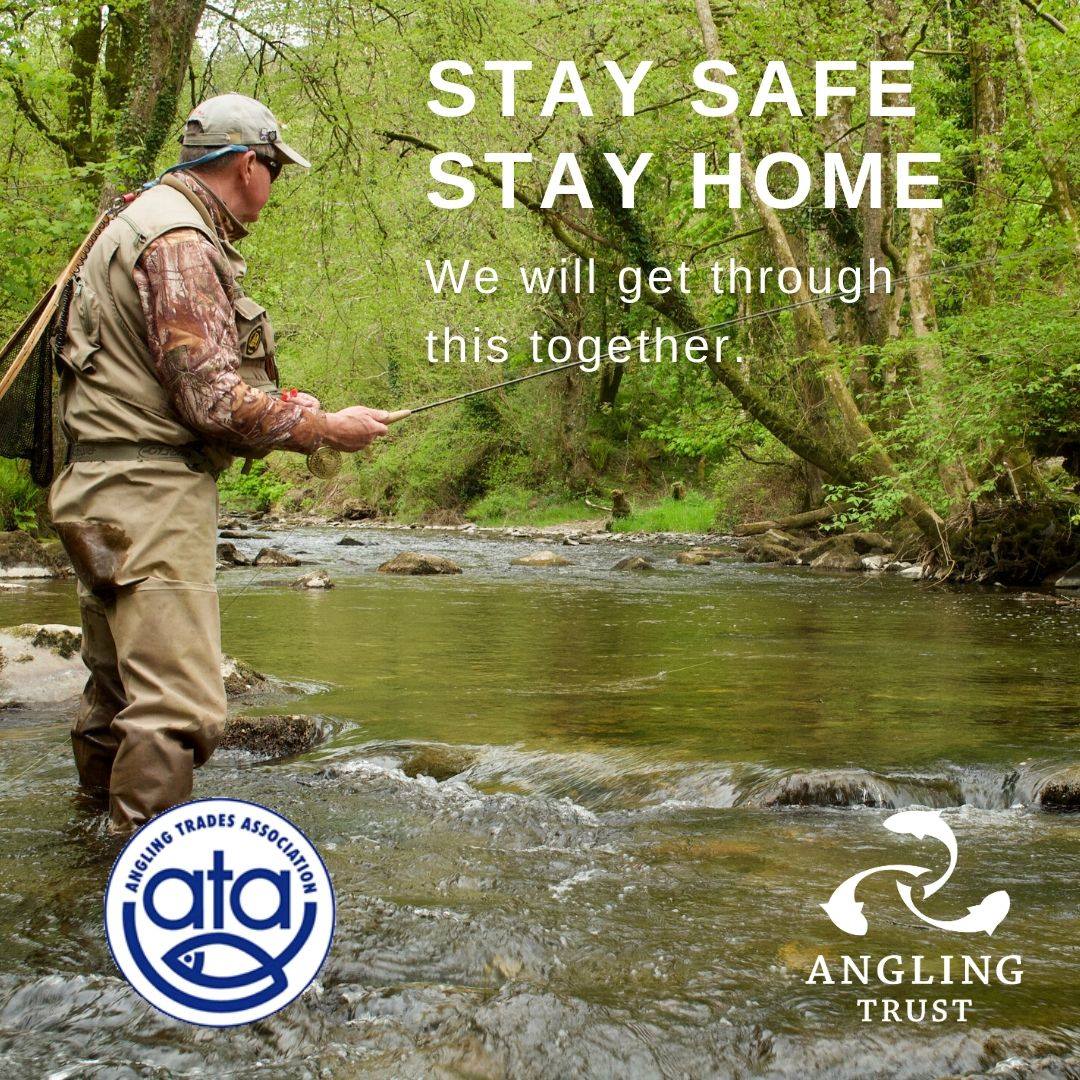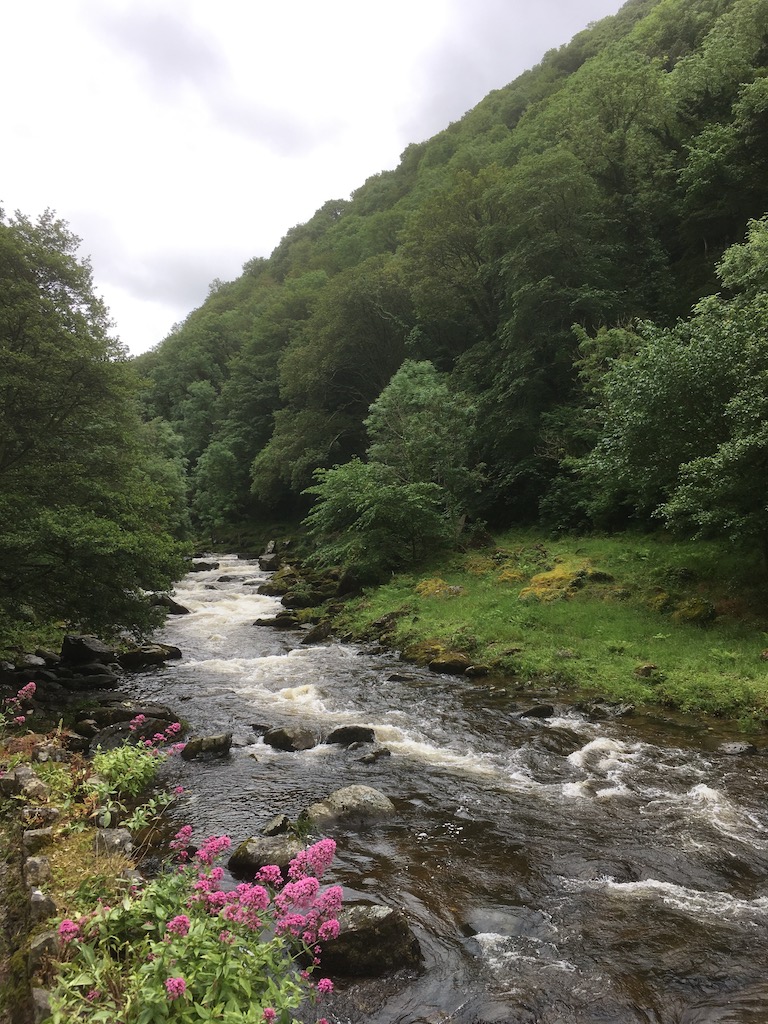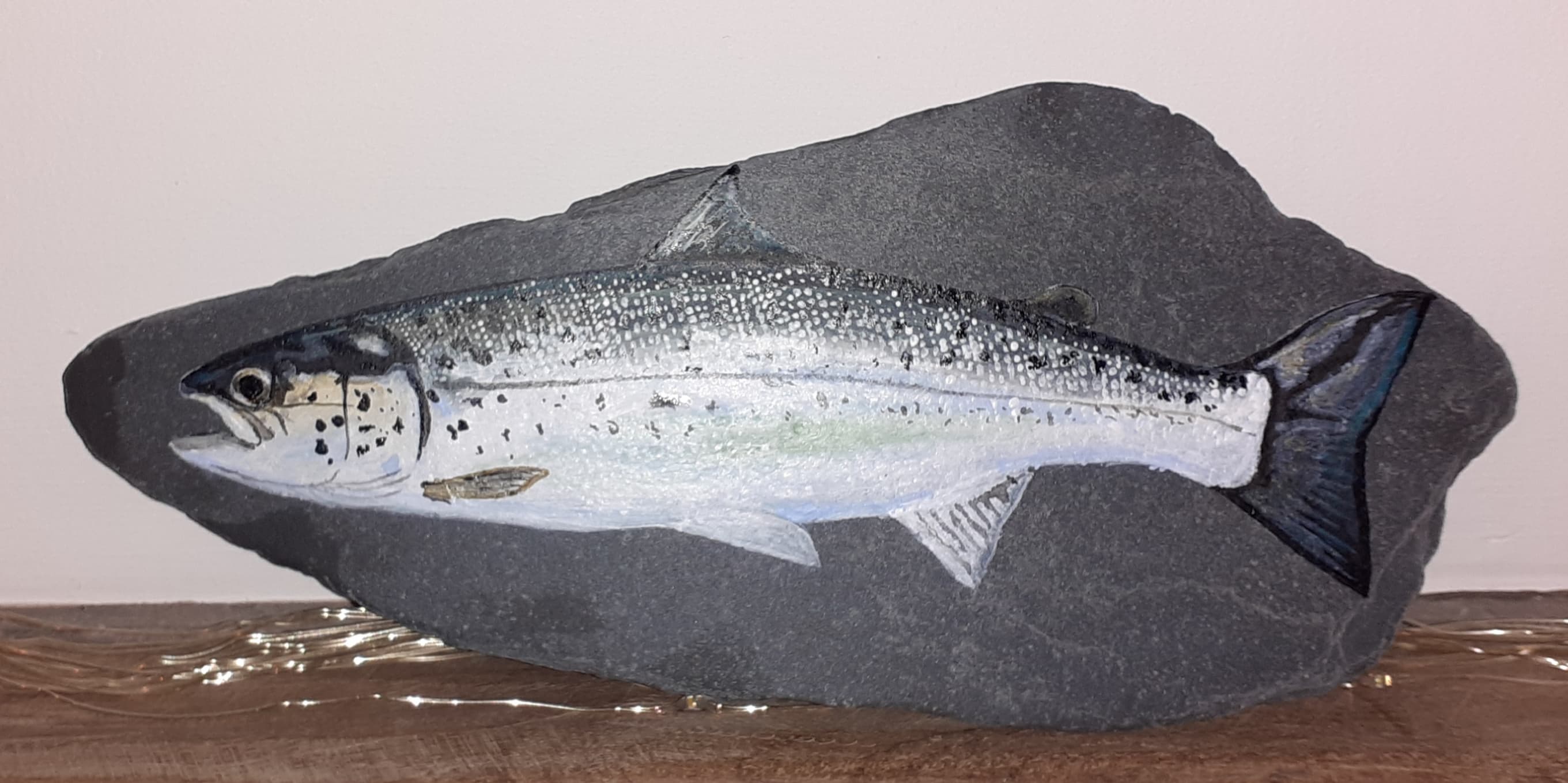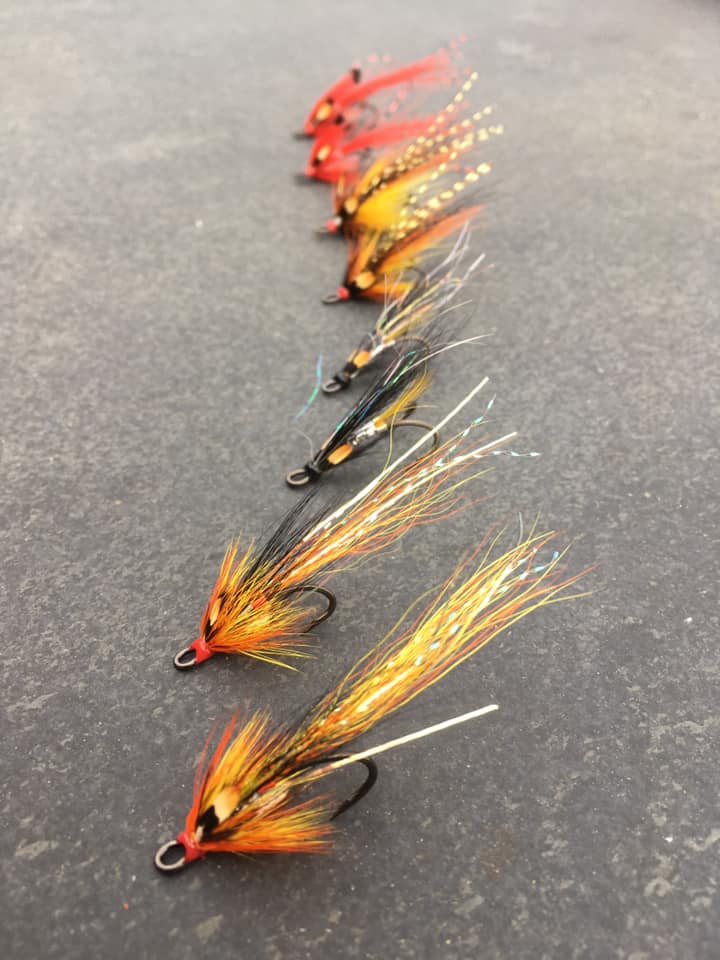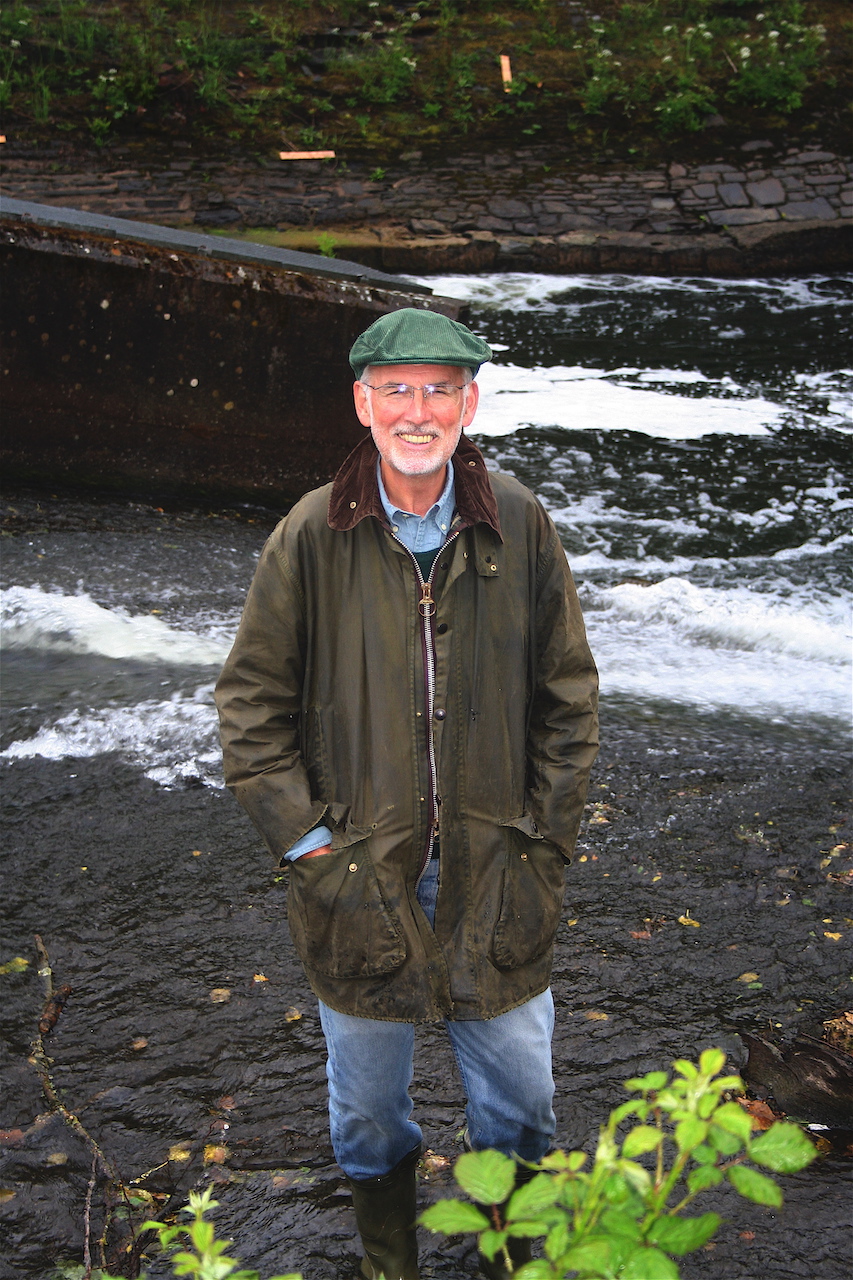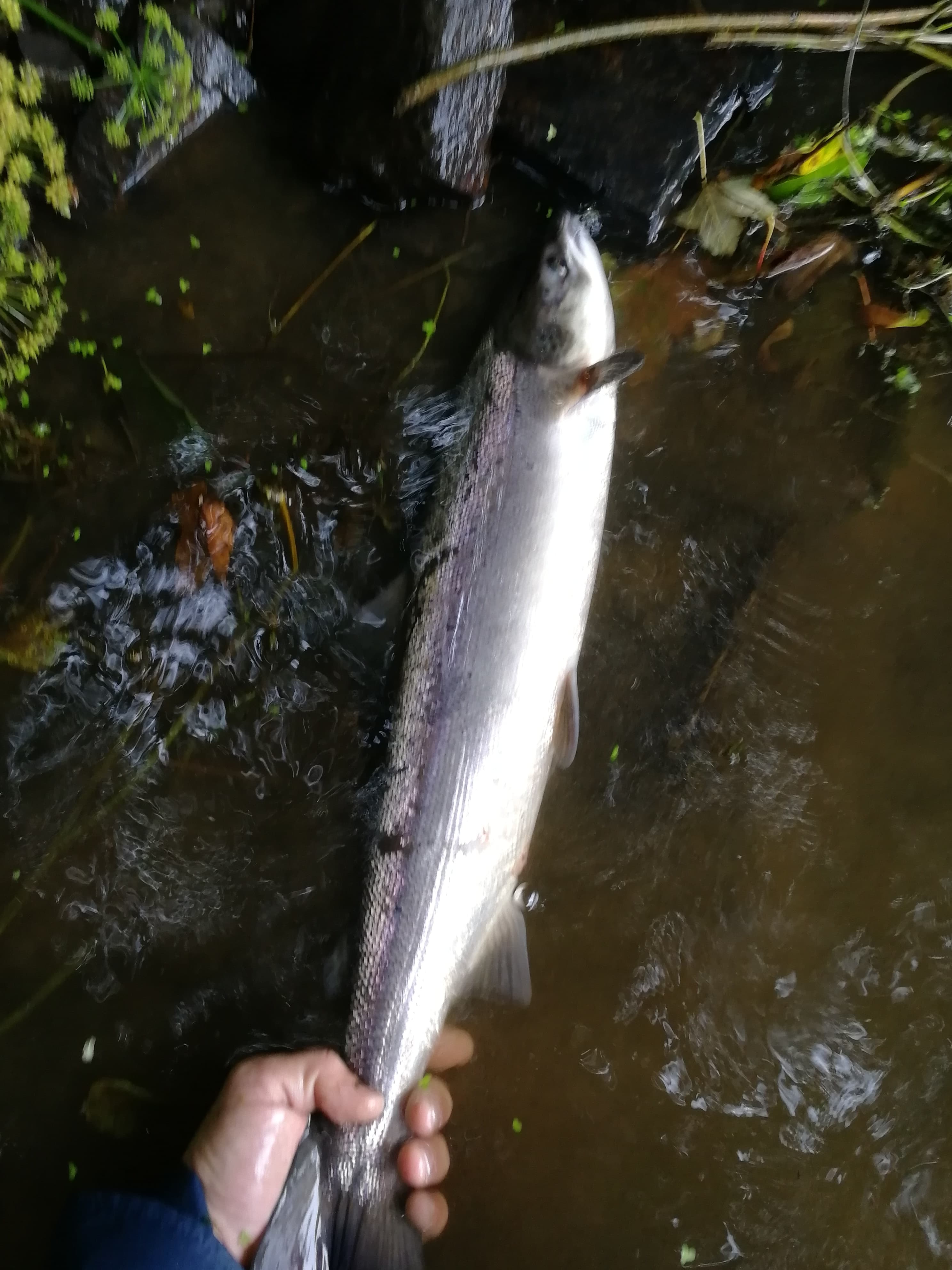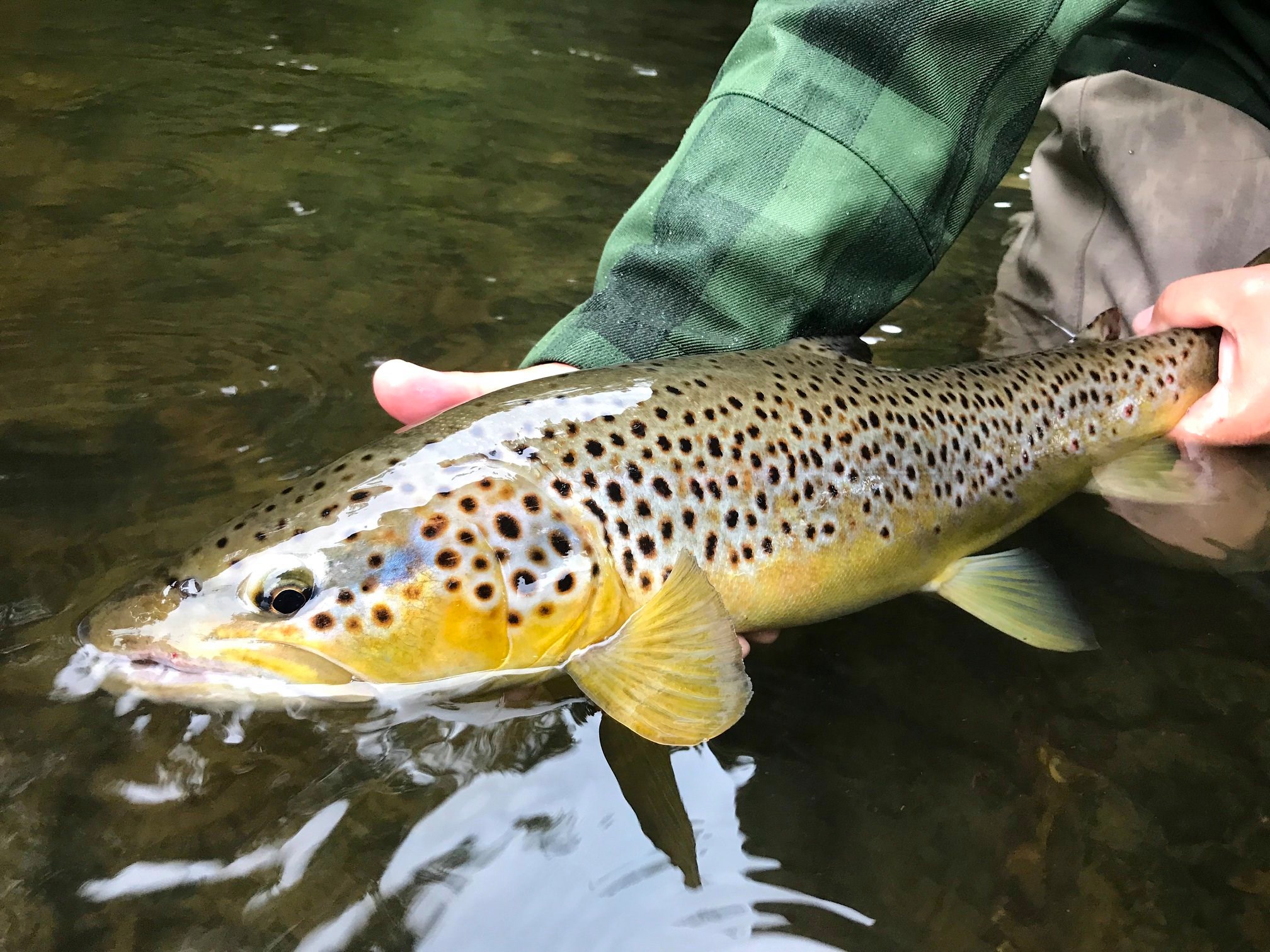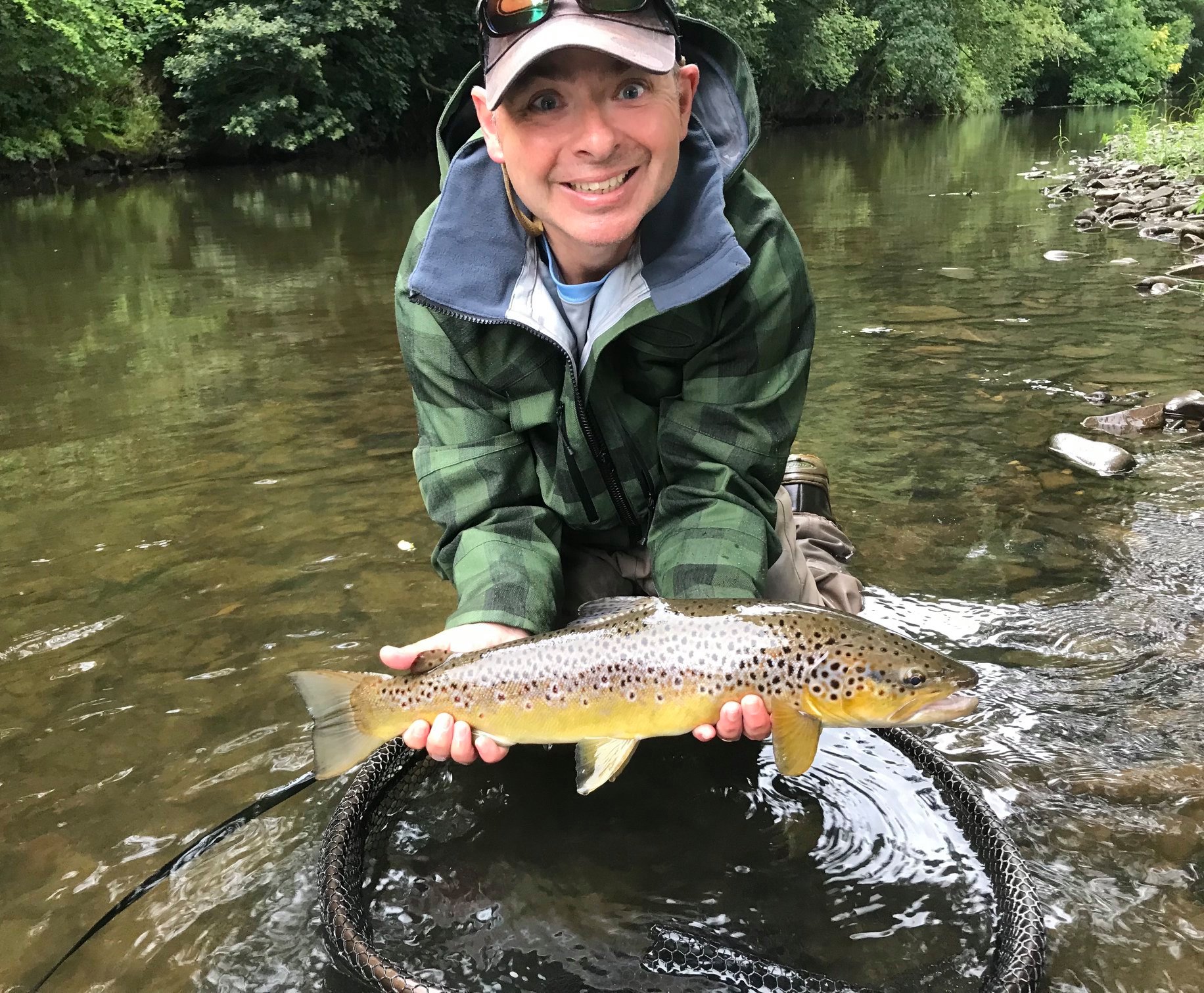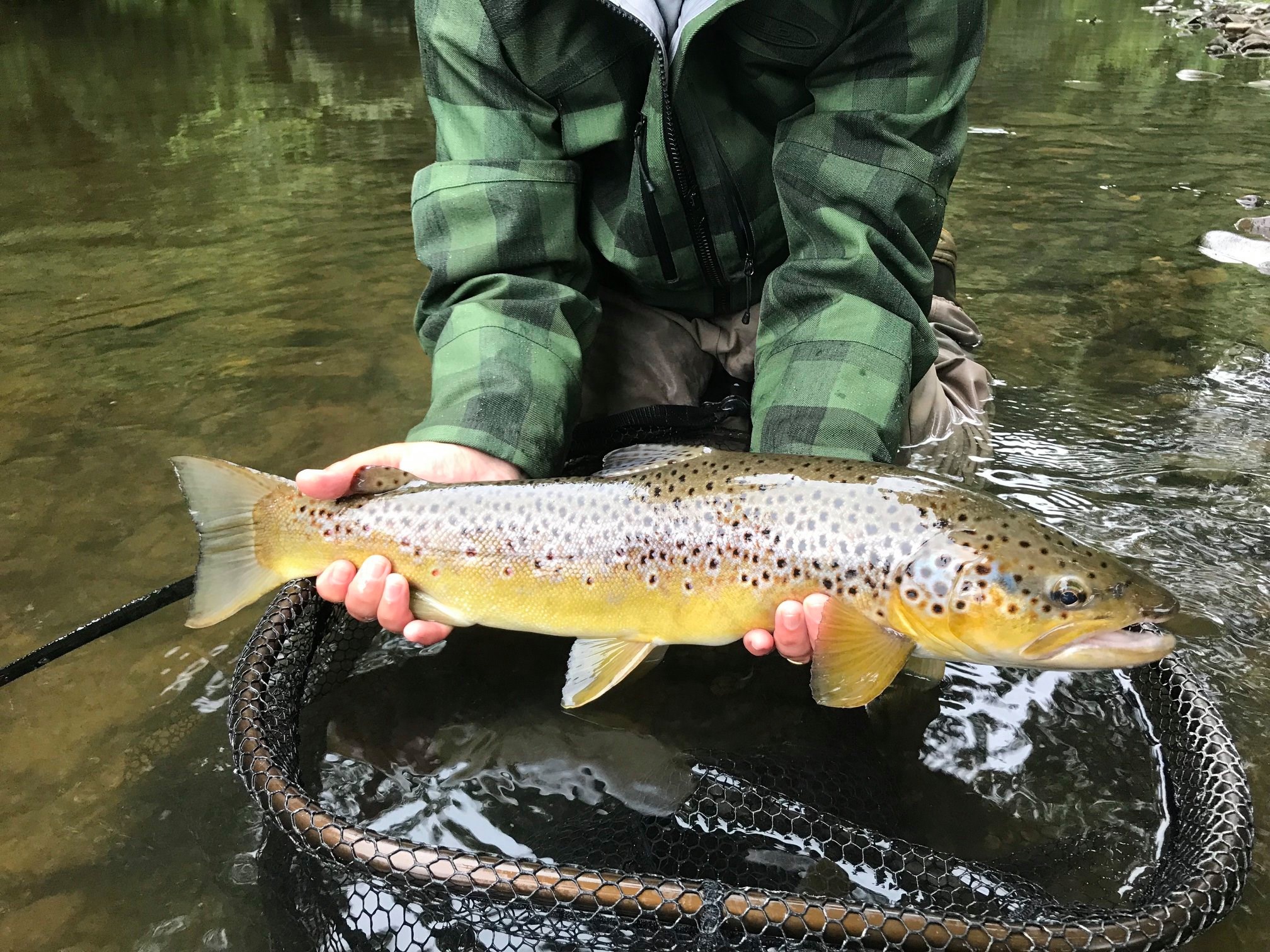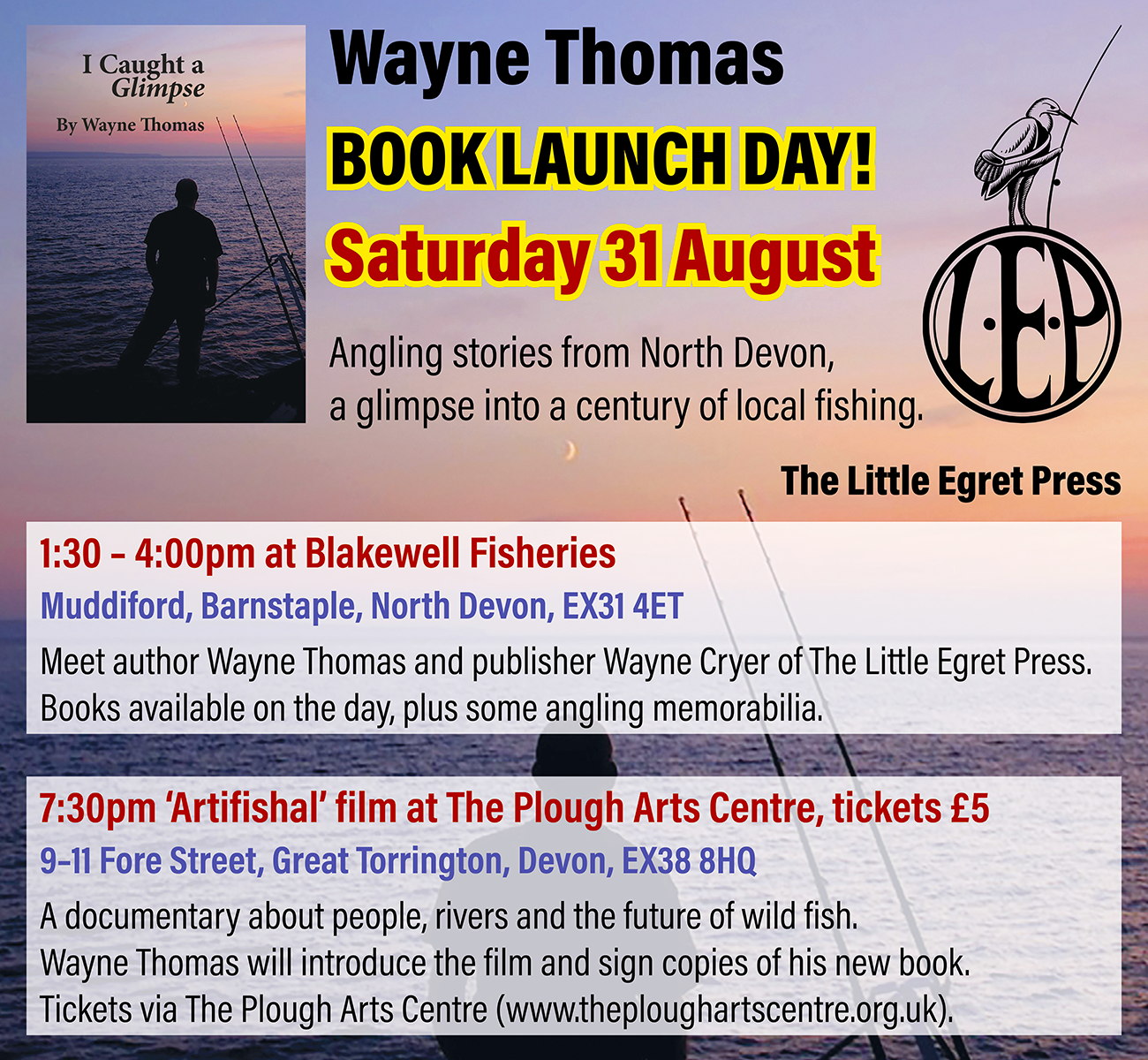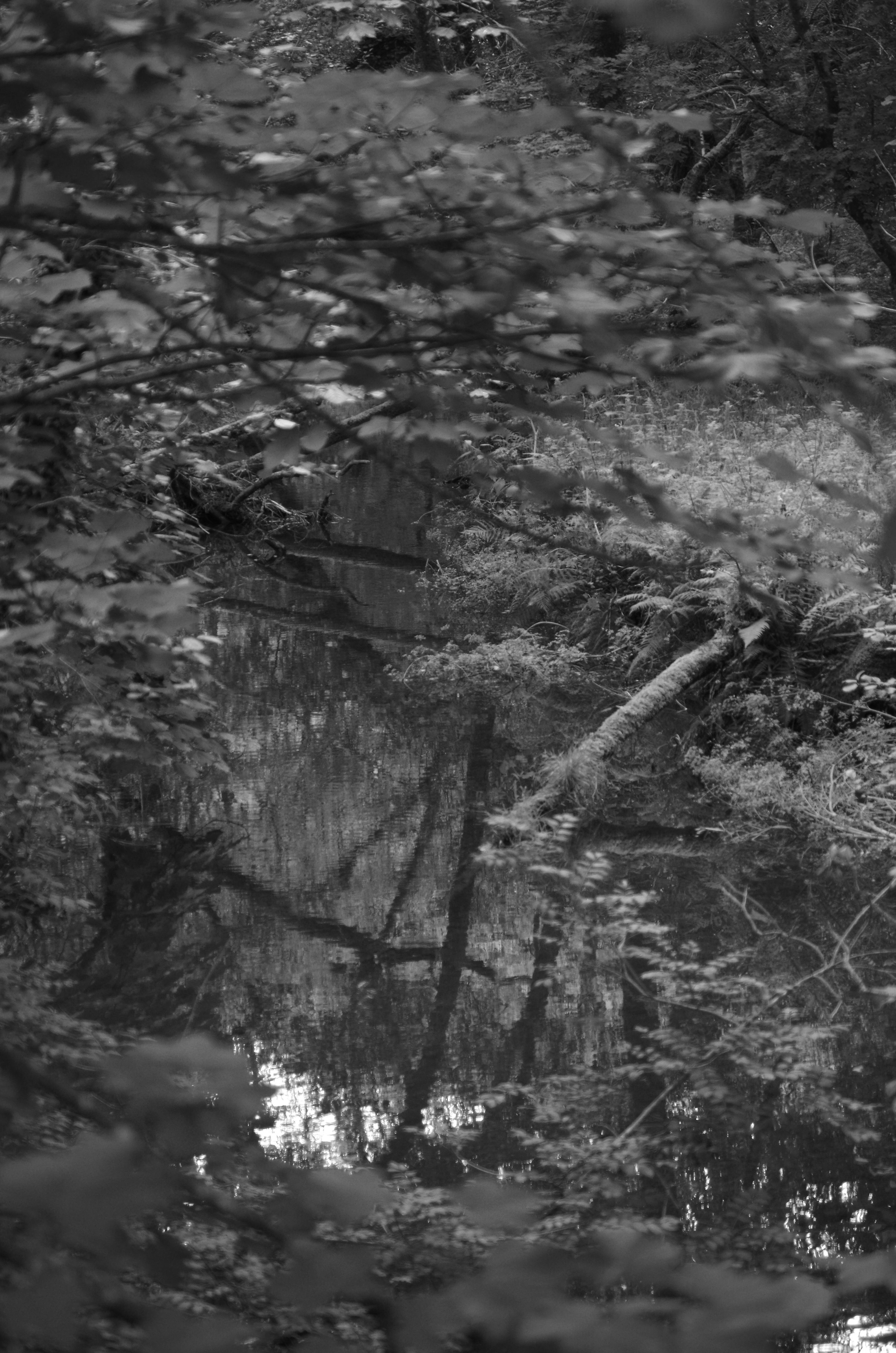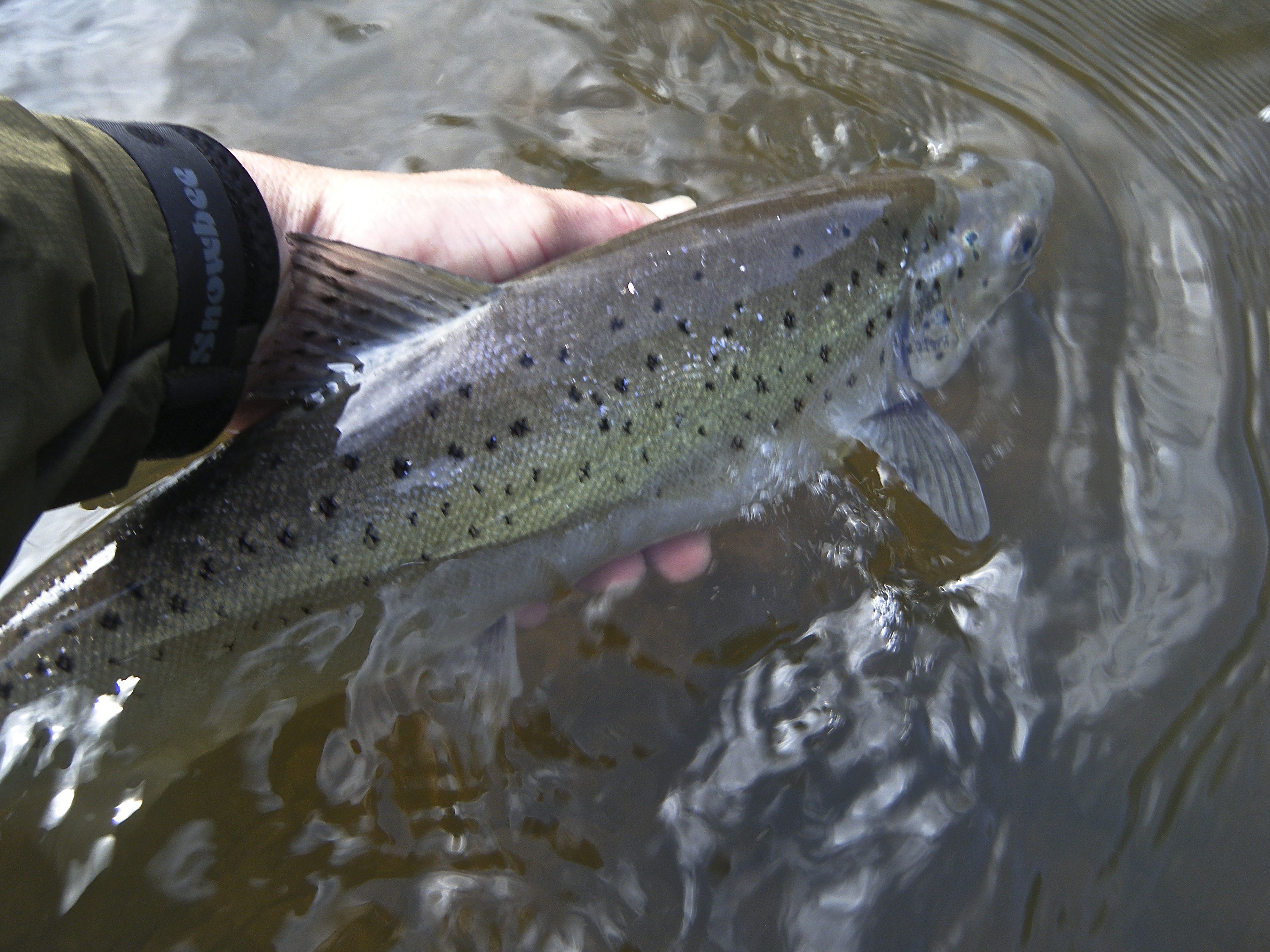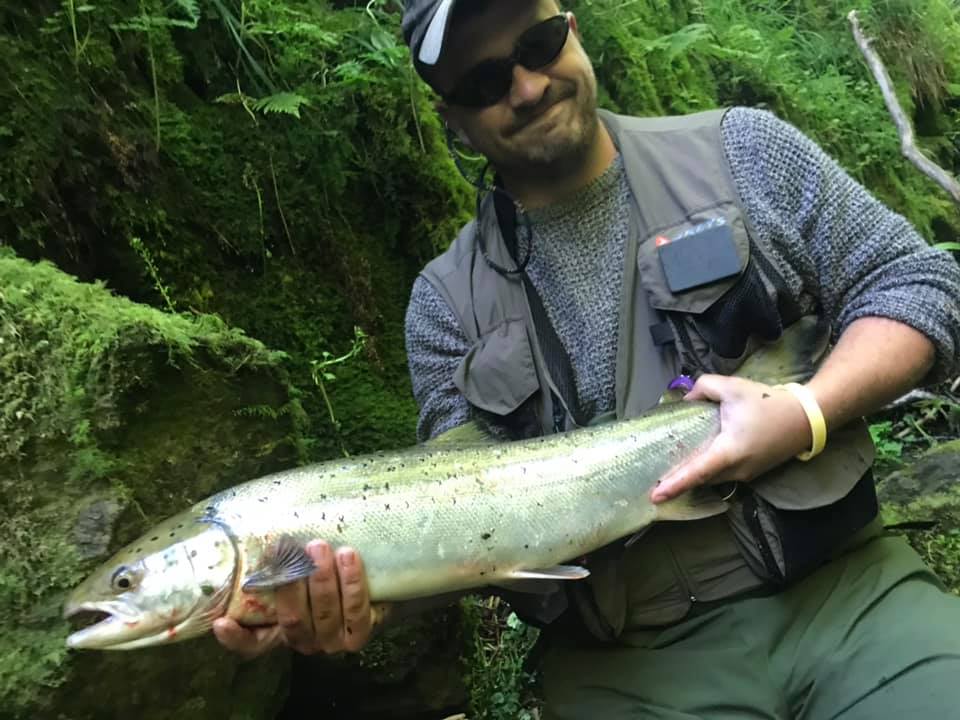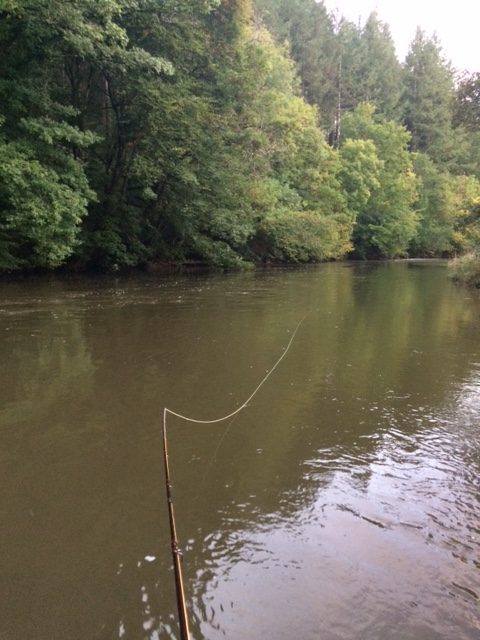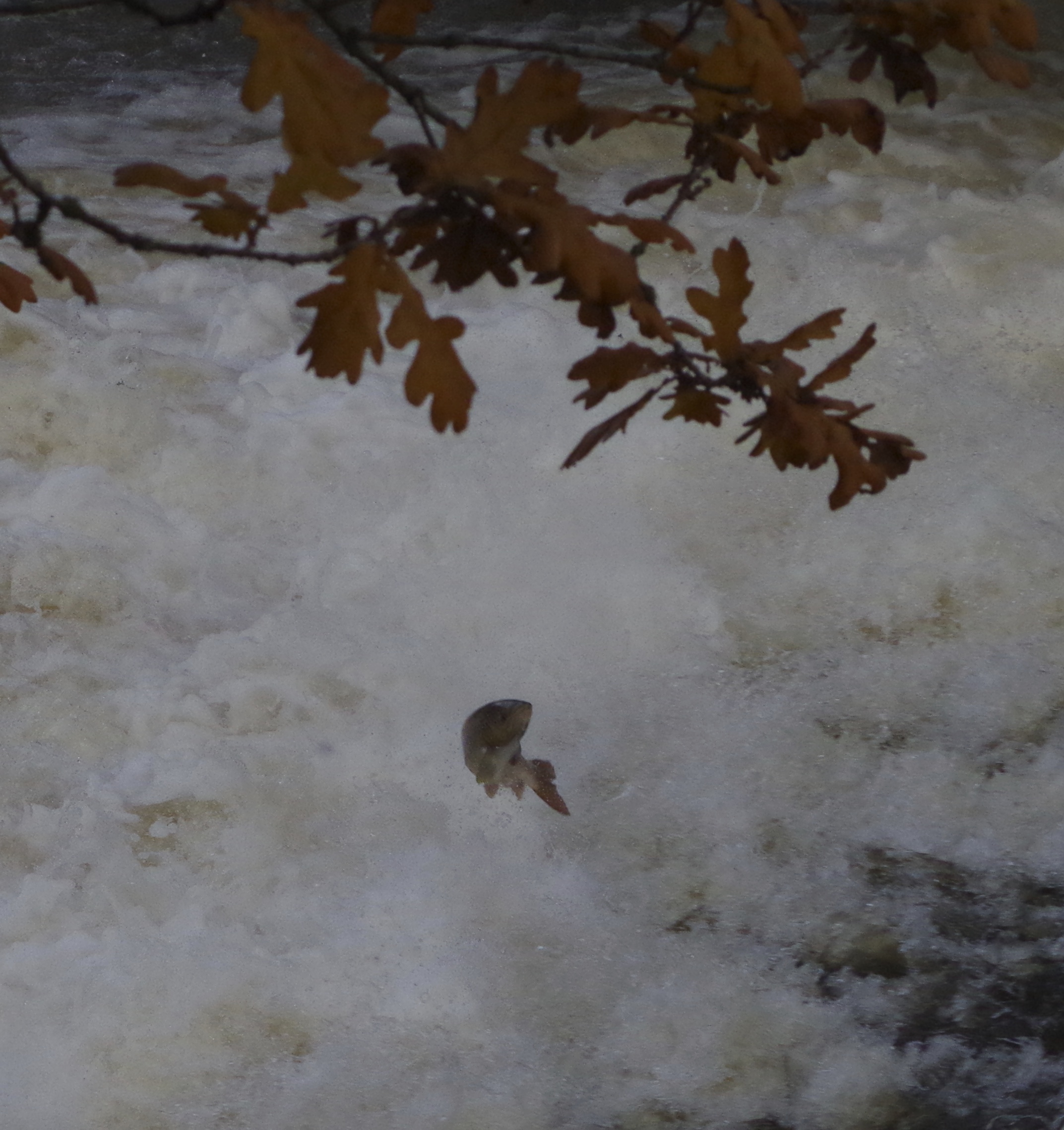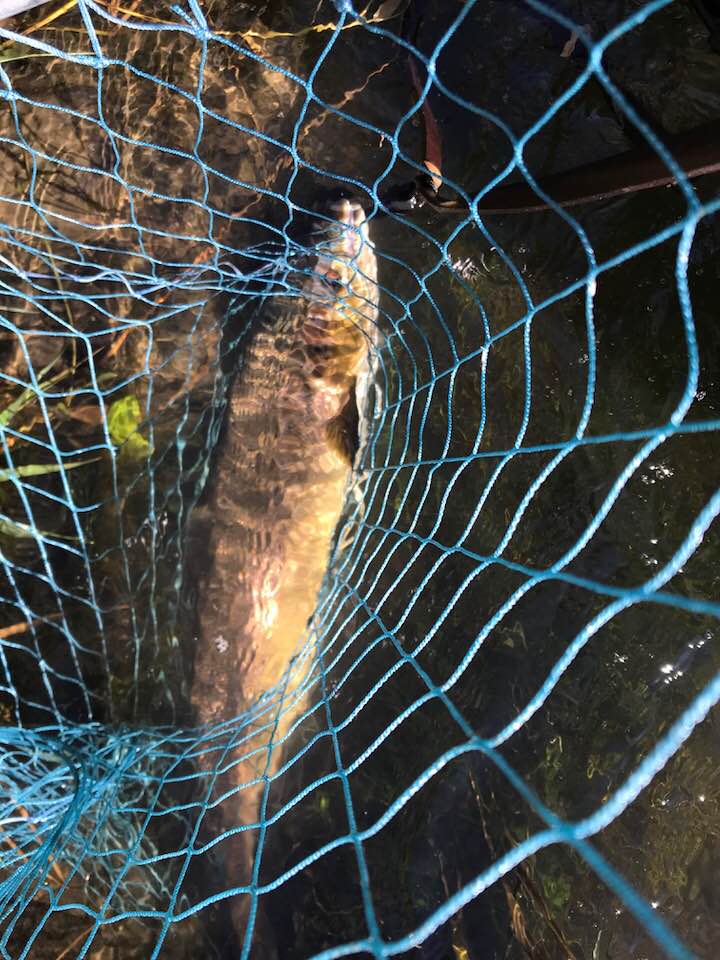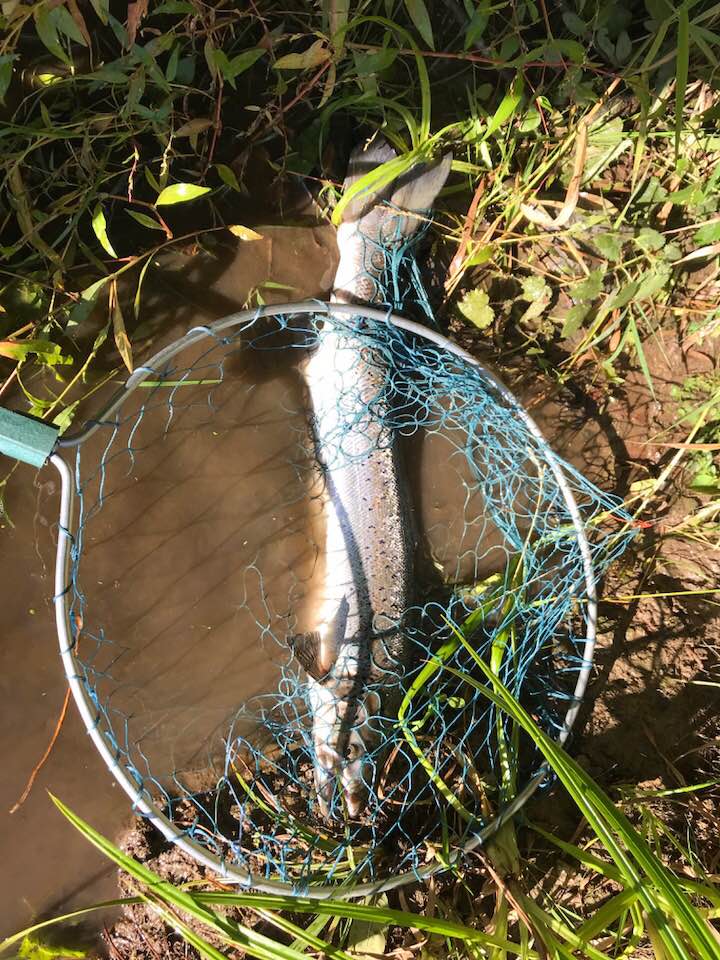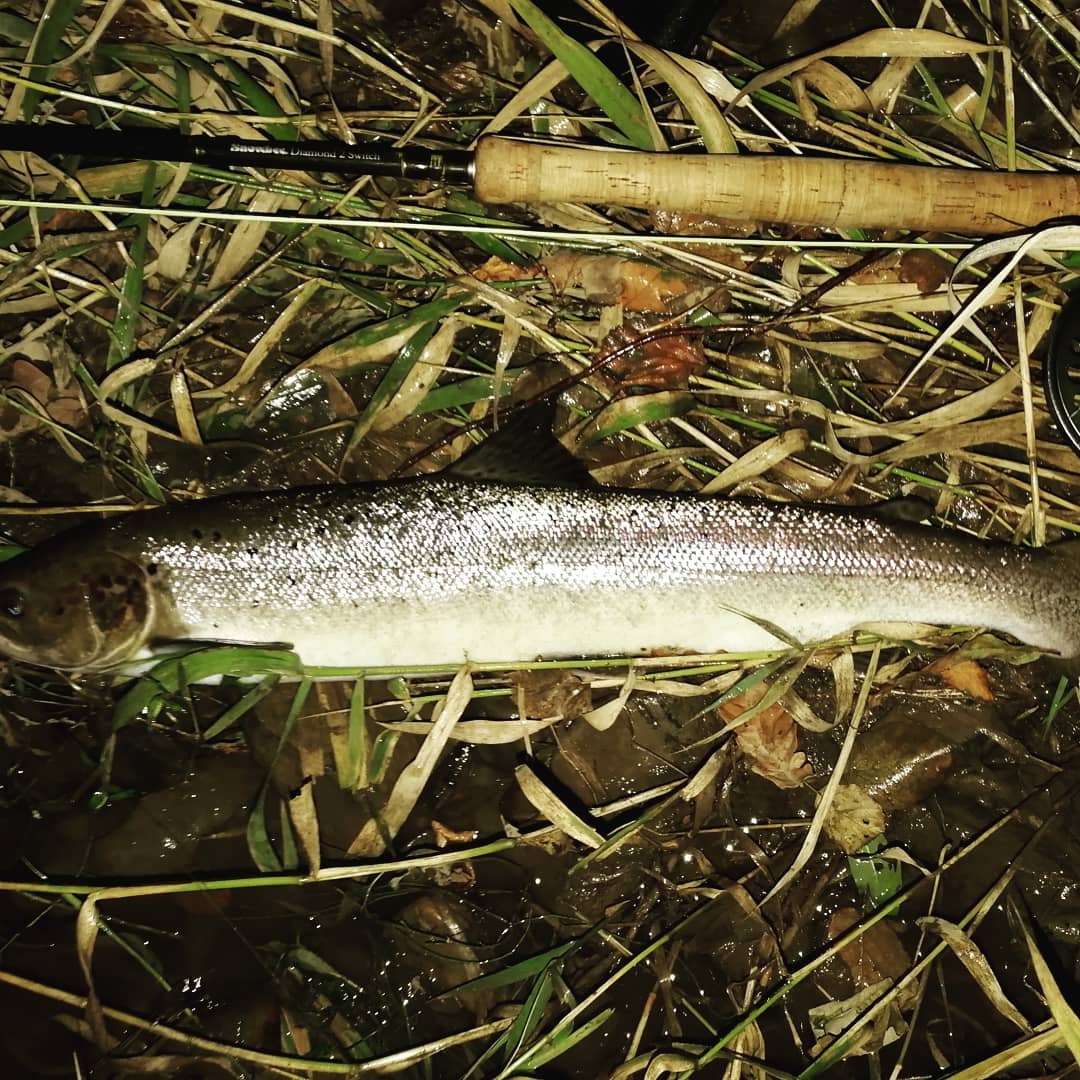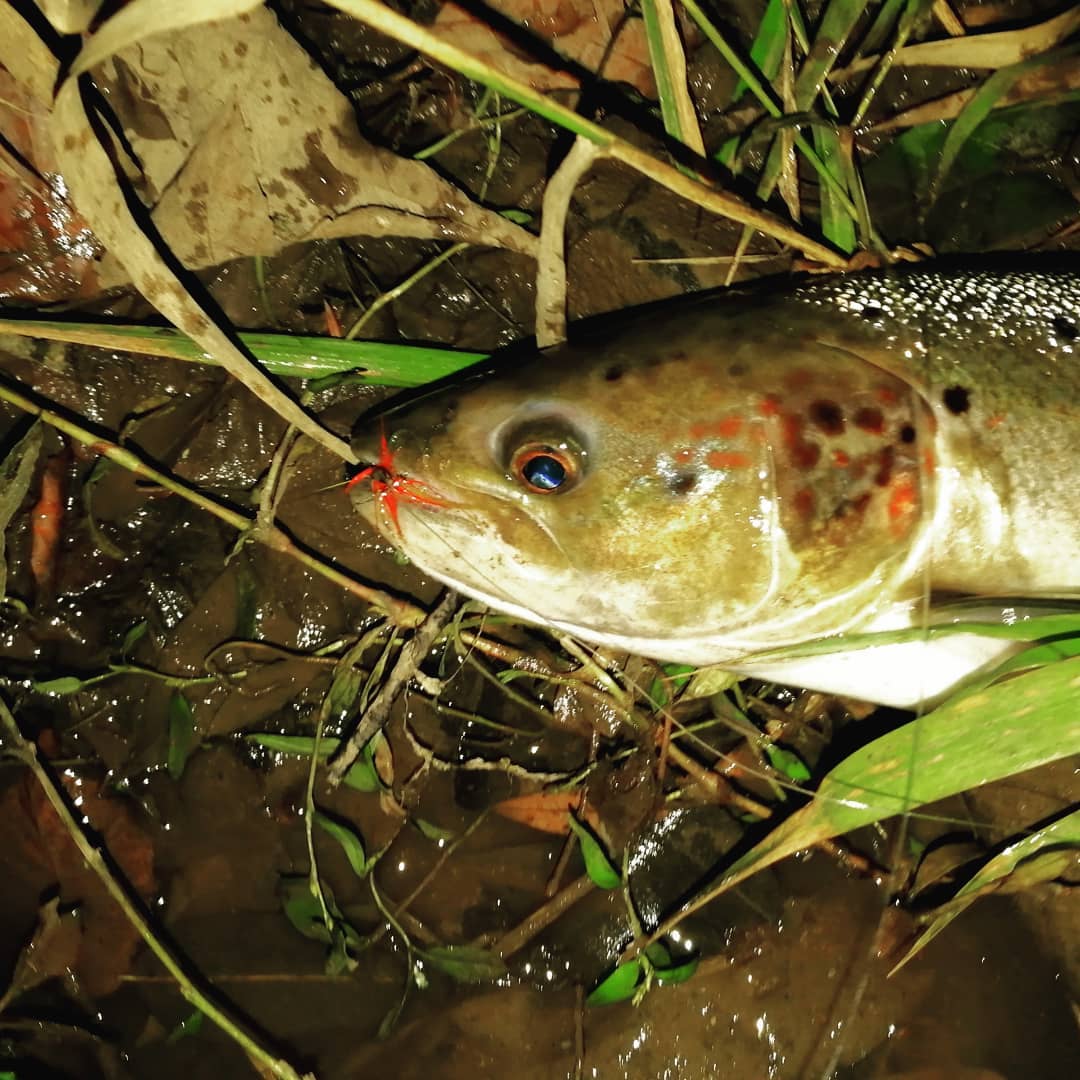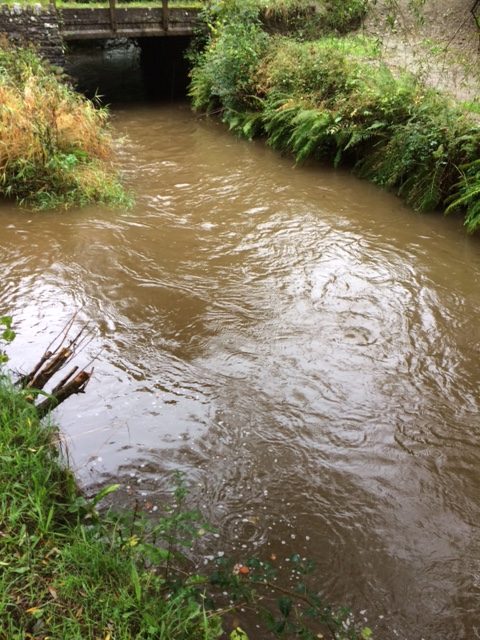Well, here are my top tips for 2019 – go fishing more, take a young angler with you, and although you may get some funny looks, do a rain dance at the same time!’
Roger Furniss. Chairman, South West Rivers Association
Spey Casts and Salmon: Remember your first salmon?
I have a very special memory of the feeling of the line pulling tight from my fingers and the steady thump, thump, thump of the salmon. I lifted the rod and felt the live weight of the fish. Pete slipped quietly into the water beside me with the net, offering encouragement and advice. Being married to a guide has its advantages. By now we could see that I had hooked a grilse of about five pounds. The strength of it was far more that I was expecting. I was starting to understand why salmon fishing can be so addictive even if the chances of success are often quite small.
Pete netted the fish, and after a quick photo to mark the occasion, I held it in the current until I felt it kick free. Of the two of us,I’m not sure who was more excited. It is a curious mix of relief and elation that accompanies catching a salmon. I have to admit
we both shed a little tear. It could so easily have never happened at all.
Despite my husband being a fly fishing guide I had never fished or had any real interest in fishing. I would occasionally join him on the river, as much to keep him company as anything else. I had played around with casting on the grasswhen he was practicing, but actually going fishing wasn’t something I thought Iwould enjoy.
About six years ago a spare spot became available on Pete’s regular trip toScotland. It probably helped that a novice friend of ours was also going. Isuppose I just thought ‘why not?’ So I decided to go.
Peter took me down to the river to learn how to Spey cast. This is dangerous territory as trying to teach your spouse anything can be fraught with peril. That said I wanted to do Pete proud and to satisfy my own determination to not let the side down. What was supposed to be just a few casts turned into a couple of hours. We started with a simple roll cast; then I learned how to reposition the line with a circle Spey. The thing was, I really enjoyed it. Making a good cast, then trying to follow it with another, and another, was satisfying and rewarding in itself. Spey casting is mesmerising, fun and therapeutic in a funny sort of way.
It wasn’t long after we’d arrived in Banff that I was standing in my waderssending out cast after cast across the Deveron. ‘Great cast’, Pete would say after a particularly nice one. At times you think comments like that are more for morale than anything else, but I knew when I had got my D-loop in the right place and the feel of the line pulling tight against the reel as the line straightened over the water.
